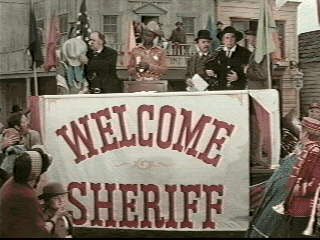Quote:
It is important. And it's really vibrating vocals. I know what causes them, it's not a problem in the bass itself. It only happens on sounds with phase issues (sharp short spikes, mainly female voices and trumpets).
:sigh:
Excuse me while I whip this out...

I'll be explaining two issues here. The first dovetails into the second.
People were convinced that the burst in "The Pretender" was the bass, but it never was. It was the "crash" / "attack" of the percussion, along with the loud and sudden "wh" sound with the resumption of the chorus ("What if I say I'm not like the others..."). All of the frequencies involved with the spike in that track are mids / low highs.
The reason that happens is because the AGC goes up way, way, way too fast. That's why I put in the gating that I did. Even without your protection mechanism, if you gate the AGC to put a brake on how fast it increases the gain, you don't have much of a spike, and what is left you can handle with appropriate clipping (stronger clipping from 3-5.5K). To be honest, without the gating, I find it very annoying that the AGC dropped the volume down so aggressively, and then the volume rises back up so fast. This causes too much up and down jerkiness, not smooth gain control.
So, people were convinced / convinced you that the spike protection was a greatly needed feature...
Now we're talking about "vibrating voices". You're claiming now that they don't have anything to do with bass, but have to do with loud spikes. Hmmm. What was the spike prevention thing in the AGC again?
You're also now talking about phase issues. Well, the default behavior of the HPF is to use Phase Linear if there are no artifacts, otherwise do non-phase-linear. When you move to NPL, that introduces phasing issues....which you then say lead to vibrating voices. :scratches head:
Further, and I might be mistaken on this, as I may have sniffed glue again, but I think you said that Bass Boost uses some non-phase linear tricks. If I'm remembering correctly, then there's another thing that deals with bass that has phasing issues around it, but yet the vibrating vocals have to do with spikes (protection in AGC) and phasing, but not bass at all (HPF and bass boost may introduce phasing issues). We won't even mention the phase rotator... Oops, I mentioned it.
Now, you can get grumpy with the sarcastic / flippant tone here if you wish, but I've toned it this way to try to get you to see that you're talking in circles. Up is down and down is up. This is because you're taking a lot of direction from someone who appears to be firmly entrenched in maintaining the status quo in "The Loudness War". Yes, that's where a lot of money comes from (the broadcasting segment), but I think some caution needs to be taken to balance the status quo (volume controls to 11) with emerging ideas of softer and more dynamic content (1770 / EBU R128).
Table the work on loudness and the FM Transmitter sections for the moment. Seriously look at multiband. That's where the most gain (pardon the pun) can come from, particularly if you allow people to control compression/limiting parameters on a per-band basis. I already know what is causing my preset to lose vocal strength on certain tracks. Those tracks, like "The Pretender", have very forceful vocals, thus with a global setting of "compress", when those bins are looked at they are determined to need to be softened.
BTW, "female voices and trumpets". The trumpet issue is something I've read about in my Google travels, but can't remember specifics. I think it can be addressed by the extra clipping / reduction of EQ / reduction of level of that particular band (bin).
As for "female voices", vibrato is something that a vocalist can do if they choose to, and I still think that actual artistic use of vibrato is being confused for "vibrating voices" in how it is being presented to you.